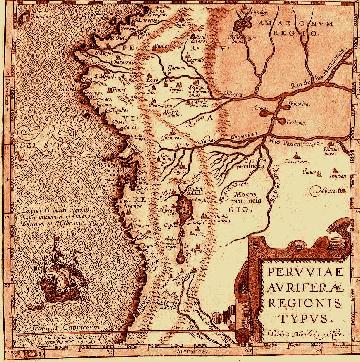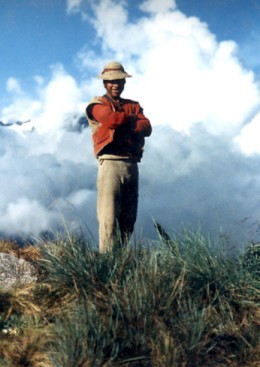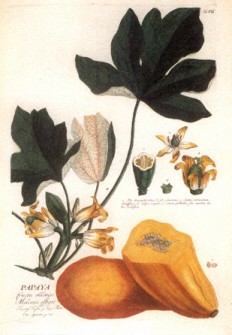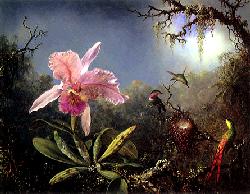|
|
|
|
APU EXPEDICIONES Cultural & Adventure Travel
ECOTOURISM - TREKKING -
JUNGLE TRIPS - RIVER RAFTING - MOUNTAINEERING - EXPLORATORY
EXPEDITIONS
EDUCATIONAL & ACADEMIC PROGRAMS - SPECIAL INTEREST TOURS -
CUSTOMIZED ITINERARIES -
FIXED DEPARTURES RESERVATIONS - TRIP PLANNING - TRAVEL ARRANGEMENTS
Land, People, History
|
|
The
greatest mountain chain in the world, the Cordillera of the
Andes, stretches four thousand three hundred miles along the
western edge of the continent of South America, from the
Caribbean to Cape Horn, No other continent possesses a
north-south mountain range cutting through the tropics,
bringing glaciers to the equator; no other range forms such a
barrier dividing climate and species. No other part of the
world possesses a
population of millions of peoples living at or above altitudes
of 9000 feet. Great capital cities such as Bogotá, Quito and
La Paz are set at heights that would be unthinkable elsewhere.
In the center the Cordillera is 500 miles wide, and contains
the highest navigable lake in the world: Lake Titicaca, a
great inland sea nestling more than two miles above sea level
and with an extension of over 1,500 sq. miles. |

|
|
|
South
America has an unparalleled range of habitats, from the immense rain
forest of the Amazon Basin, through lofty summits of 20,000 or more
feet, to the Atacama desert - far dryer than the dead heart of
Australia or the Sahara. Considering its area, South America has, by
far the richest animal population of any continent. This can well be
called the “ bird continent”, for its forests, mountains and
plains are inhabited by almost 3,000 species, or about 35% of the
9,000-odd species found throughout the world.
Likewise,
nowhere else in the world are found populations of millions of human beings
settled and established at altitudes ranging from -and higher than- 11,000 ft.

|
|

|
History
shows agricultural societies, often associated into states, in
full and careful use of the diverse ecological levels and
resources of the Andes throughout the last 4,000 years. The
density of population in Tibet -for example- does not compare
to the Andean altiplano where -in the case of the Titicaca
basin- this density reaches 200 inhabitants per sq.mile. Four
fifths of this long and vast mountain world lies between 11
dgr. north and 24 dgr. south of the equator. It is within the
folds of these “inter tropical Andes” that -millenniums
ago, humans began a harmonious conditioning of their
environment and where -later in time- the Chavin, Tiawanaku,
and Inka cultures established civilizations of the highest
social and technological order. These civilizations bequeathed
a legacy to the world which goes beyond the grandiose
archaeological remains and finely wrought jewelry and
textiles: The whole of this realm -which included Andes,
desert and Upper Amazon- was one of the world's great centers
of plant domestication and modern agricultural economy has
been tremendously enriched by Peruvian and Andean fruits and
vegetables, unknown in the Old World until after the European
conquest.
|
|
|
More
than half of the foods that the world eats today were developed by
Andean Farmers.
It
has been estimated that more kinds of food and medicinal plants were
systematically cultivated here than in any other sizable area of the
world. One has only to mention the obvious: potatoes (240 varieties);
sweet potatoes, squash, beans of infinite variety, manioc (from which
come farina and tapioca); peanuts; cashews, pineapples, chocolate,
avocados, tomatoes, peppers, papaya, mulberries. To these are added a
score of plants which have proven invaluable in the technological and
medicinal development of mankind: Cinchona from which Quinine was
derived, Caucho from which latex and rubber were first produced; Coca,
Ipekak, Curare, Quinua, Kiwicha and many others. So many and so varied
the plants, and so long domesticated in the old world, one forgets
that all these originated in the Americas.

|
|
To
explore, visit and become thoroughly acquainted with this vast
part of the world and its multifarious and timeless culture, an
entire lifetime would not suffice. And yet, it is not
impossible: The Cusco Region is gifted with the greatest array
of these features, This is the region comprised within a 500
kilometer radius of the city of Cusco,
the last major Native
American Metropolis, center of one its greatest civilizations
and the oldest continuously inhabited capital city in the
Western hemisphere. This region -covering an area not much
larger than England or the American States of Montana or
Colorado- encompasses the central nucleus of the high Andes.
Hundreds of miles of uninterrupted snowcapped mountain ranges
with many peaks over 20,000 feet, plus the eastern Highland
Jungle and Rain forest including Machu Picchu and Vilcabamba; a
section of Pacific Ocean Coastline; the entire Lake Titicaca
basin; four great navigable rivers, all tributaries of the
greatest river of all -the Amazon- ; numerous archaeological
remains of great importance, colonial 16th century villages; and
over 11,500,000 acres of National Parks, Wildlife Sanctuaries,
and Reserved Natural Areas.
|

|
|
|
This
is indeed the place where glaciers & jungle meet, . ... And there
is always something new awaiting every visitor and plenty for all: The
trekker, the white water enthusiast, the mountaineer, the bird
watcher, the history buff; the artist, the musician, the photographer
... Those with many interests, those in search of one, or perhaps
simply the person seeking his or herself through communion with nature
... Welcome to the Andes !.
REFERENCE
SOURCES: “THE FLIGHT OF THE CONDOR” -MICHAEL ANDREWS; “THE
ANCIENT CIVILIZATIONS OF PERU” -J.ALDEN MASON; “THE
ANCIENT SUN KINGDOMS OF THE AMERICAS” - VICTOR VON HAGEN.
|
|
|
|